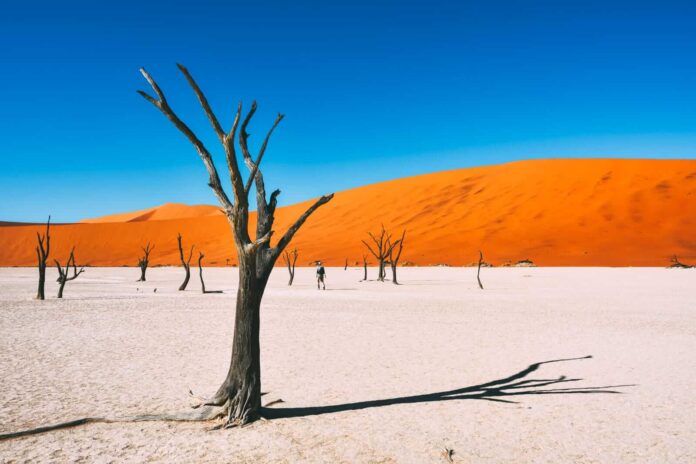Namibia has a backdrop of boundless vistas, with huge areas of savannas, highlands, valleys, and deserts. These are just a few of the most amazing activities you may engage in when traveling across Namibia.
1. Discover the Kalahari Desert’s awe
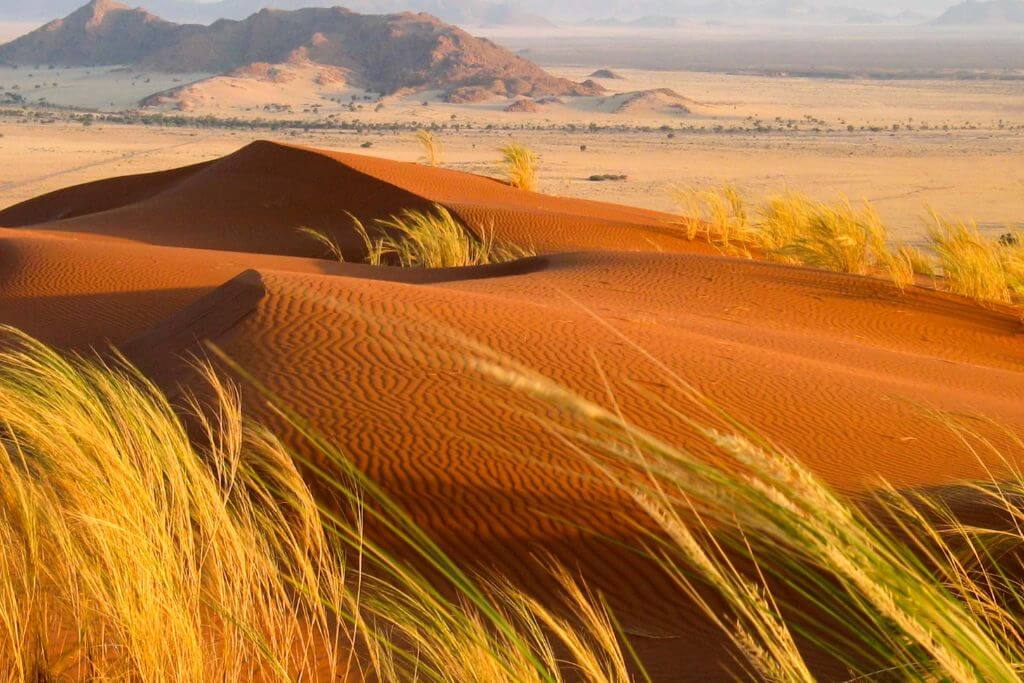
The Kalahari Desert is a large, lonely area of rough terrain and high temperatures, but it is also teeming with animals, including herds of elephants, packs of wild dogs, cheetahs, black-maned lions, and leopards. As the dunes of Namibia rise and mingle with iron oxide from the Orange River to the south, the desert floor turns red, creating the backdrop for some of the most famous sunsets in Africa.
The San, the earliest and oldest society in Africa, have lived in the Kalahari for more than 30,000 years. Visits to San communities empower individuals and families in need while helping to preserve their hunter-gatherer customs.
Also, you’ll hear Khoisan, a San language with five different clicks, one of Africa’s oldest click languages. Investigate these enriching cultural encounters with the aid of organizations like Ju/’Hoansi-San, the Nyae Nyae Conservancy, and Naankuse.
2. Explore a deserted ghost town
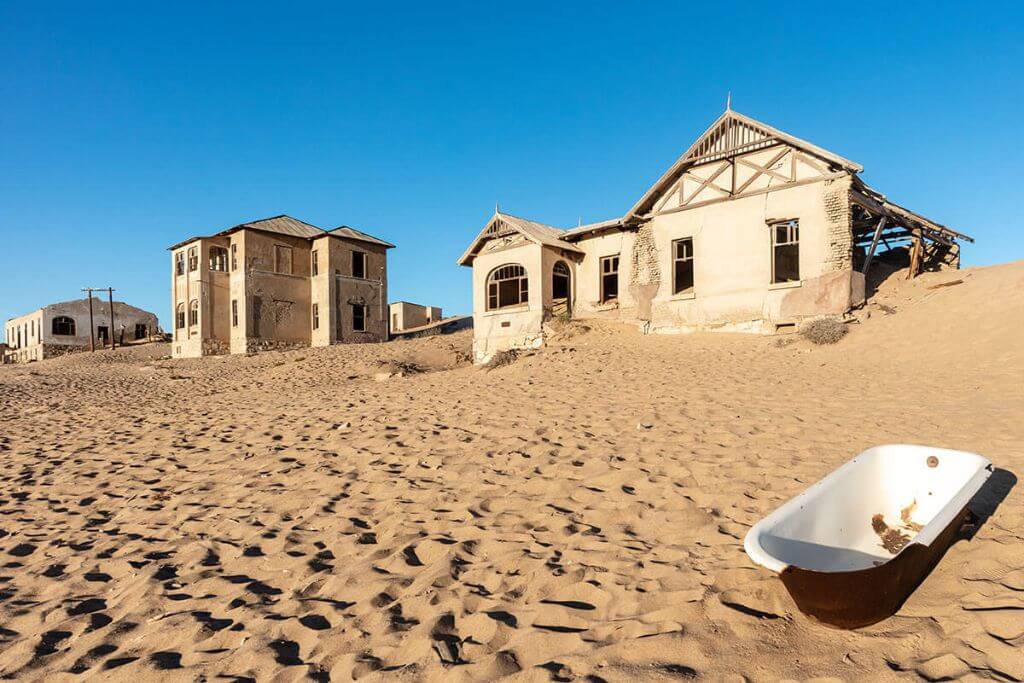
Kolmanskop, a formerly prosperous diamond mining community, is now a weirdly interesting ghost town that is gradually being absorbed by the Namib Desert. You might have to crawl through a side window to get inside some of the structures because the sand is shifting frequently and filling in windows and openings. While inside, you’ll notice signs of human existence, such as stenciling, wallpaper, brightly painted walls, and telephone hardware.
You may stroll through former employees’ residences, a school, a hospital, a shopping mall, a bowling alley, and the first X-ray lab in the Southern Hemisphere as you tour the structures. The director, architect, bookkeeper, and other higher-ups of the mine originally lived in a millionaires’ row further up the dune.
Every time you walk into a new structure, you’ll discover something different, like a bathtub that the rising sand carried into another room. Birds and small animals’ footsteps can be seen if you look down. If you’re lucky, you might even see a brown hyena, one of Africa’s most endangered predators; the area is a protected area for these lovely, reserved canines.
3. Schedule a road trip across Namibia
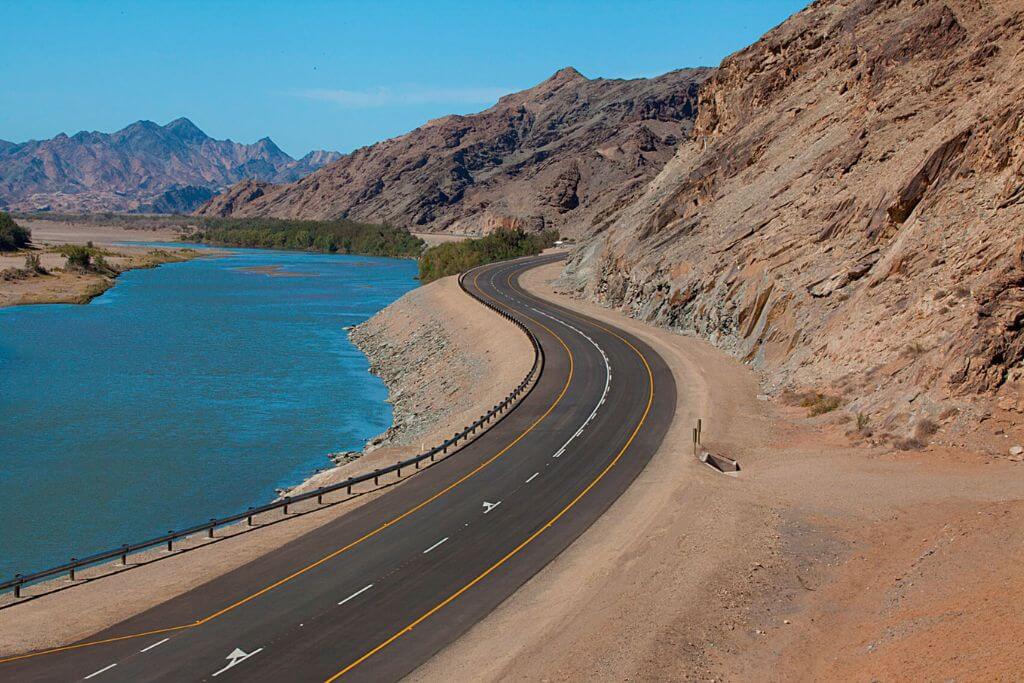
While visiting Africa, the majority of visitors don’t think of taking a road trip, yet Namibia is a self-drive utopia, a country of vast open expanses where the scenery continuously changes from desert to mountains to beautiful valleys.
The distance between points of interest might range from 200 km (124 miles) to 600 km (372 miles), so be sure to properly plan your drives. After leaving the main route, it can be many hours before you encounter another car. Instead, wildlife like giraffes, zebras, and oryx will delight you.
Namibian roads are rated from A to D, where A is a wide paved highway, and D is a difficult dirt “road.” Our 4×4 vehicle rentals include two spare tires, two petrol tanks, and a variety of other safety and comfort features. Bring your sense of adventure and the necessary gear, and prepare for the road trip of a lifetime.
4. Stare into the depths of a canyon from long ago
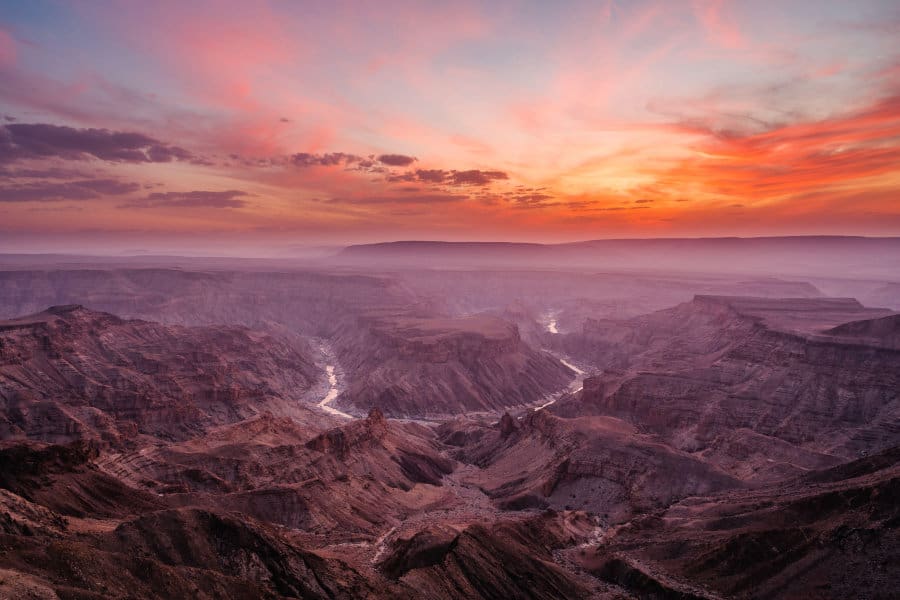
Fish River Canyon, the second-largest canyon in the world, is a unique geological marvel. The location, which is more than 500 million years old, is breathtaking in both its size and unadulterated natural beauty.
You’ll believe you’ve arrived on another planet as you approach the area because of the impressive formations and outcrops that are created when enormous red rocks are stacked on top of one another.
Adventure lovers enjoy hiking and mountain biking throughout the dry winter months. Many of the local resorts provide morning and evening drives, with the latter including a required stop for al fresco beverages.
5. Hike an immovable dune
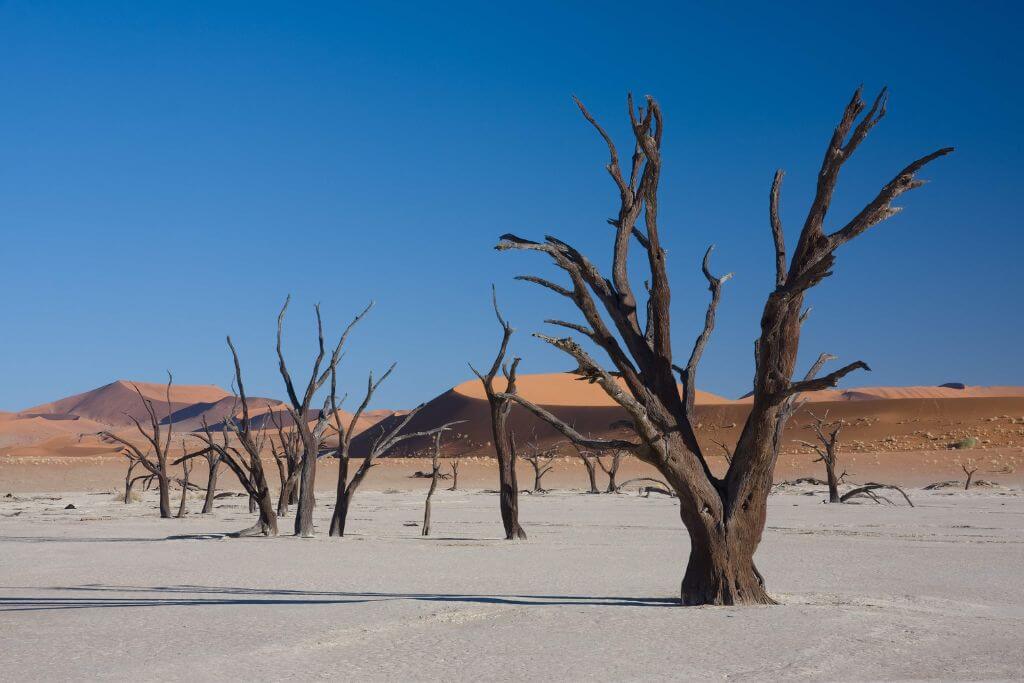
For a good reason, Sossusvlei is one of Namibia’s most well-known tourist destinations. Some of the tallest dunes in the world are bright red and surround a dry pan of salt and clay. These dunes, sometimes known as star dunes, are formed by winds that blow from all directions and have incredibly thin spines that appear to be a little wider than a single grain of sand above the crest. Early morning climbs up hills are fun for hikers, especially Big Daddy, which is the tallest at 325m (1066ft).
Deadvlei, a photographer’s paradise, is located a little further west. The name, which means “dead marsh,” refers to the area’s former state as a rich wetland that was home to acacia trees and bushes. When the surrounding dunes grew taller some 600 years ago, the river was permanently cut off from the pan.
The skeletal remains of trees are all that is left. The trees won’t ever rot in this place since the air is so dry and hot. The tallest of the dunes surround them as they rise from the scorched white pan, which is set against a piercing blue sky.
6. Stargaze into the darkest sky in Africa
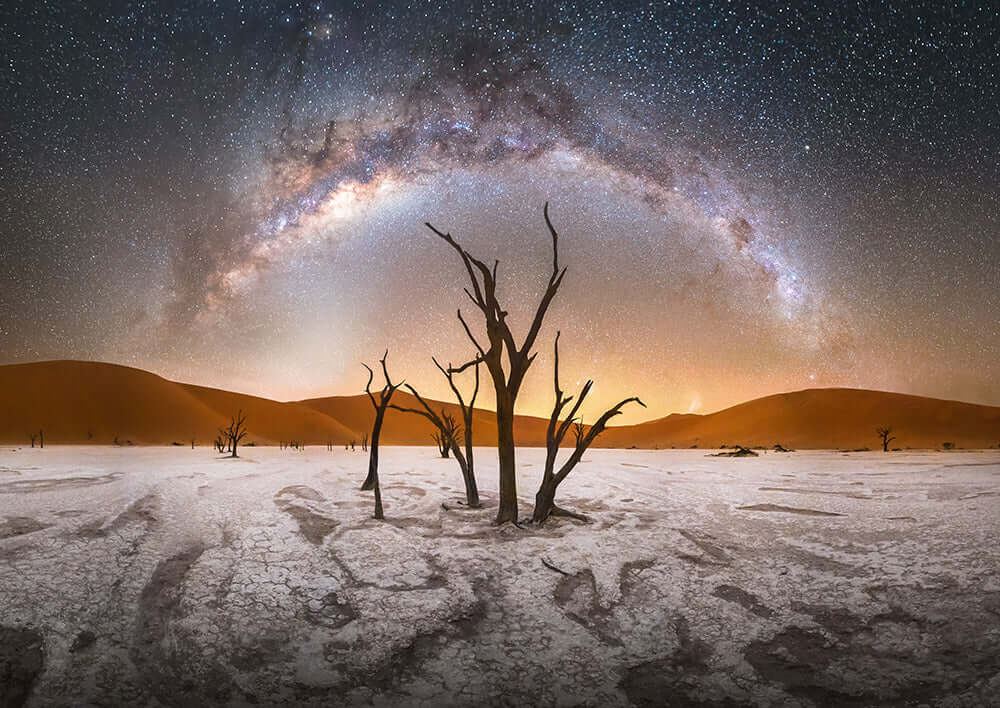
Astrophotographers travel from all over the world to Namibia to capture the night sky. The Sossusvlei region of the oldest desert in the world, the Namib Desert, has guaranteed clear skies in June and July since it is so sparsely populated and has little to no light pollution.
As a result, awe-inspiring vistas of the Milky Way’s galactic core in all its celestial splendor is available to stargazers. For visitors from the Northern Hemisphere, viewing the Southern Cross constellation is another rare treat.
7. Learn about the past in Windhoek
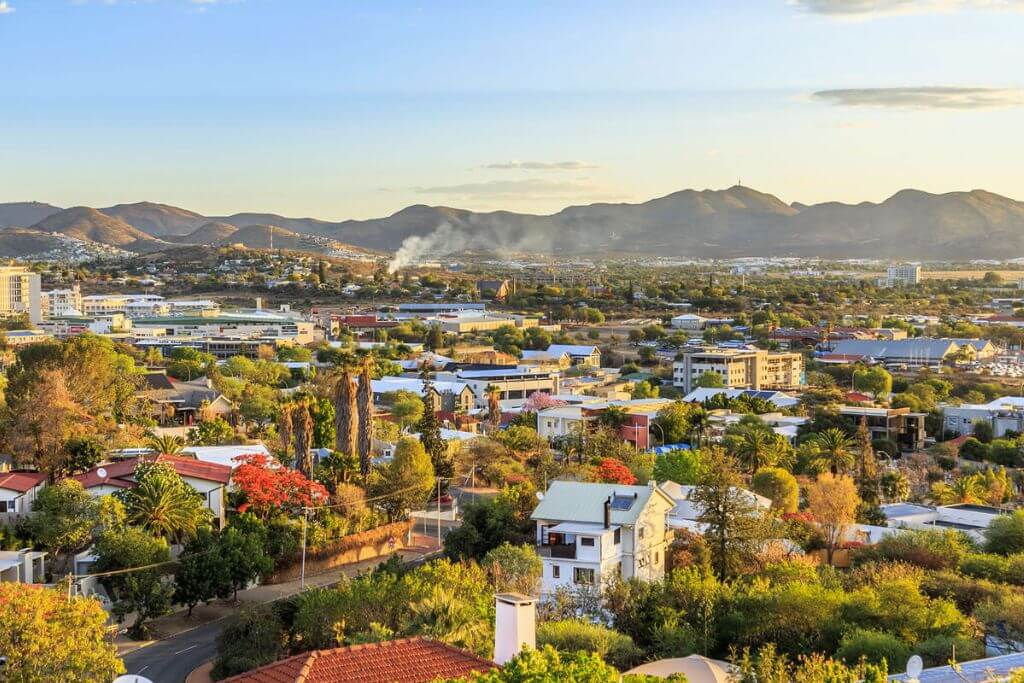
Your Namibian vacation will probably begin and end in Windhoek, which serves as both the nation’s capital and largest city. Don’t forget to stay a couple of days.
There is a lot to see and do in Windhoek, especially for history enthusiasts. Ancient San rock drawings are among the historical and zoological exhibits available at Namibia’s National Museum. The Independence Memorial Museum, right across the street, is home to antiques, sketches, and dioramas that depict the history of the nation and its struggle for freedom.
Go to the museum’s top level and relax with a drink on the “Balcony of Love” for a bird’s-eye view of the city. The most recognizable landmark in Windhoek is Christuskirche (Christ Church), the oldest Lutheran church in Namibia.
8. Wander where the desert and the sea meet
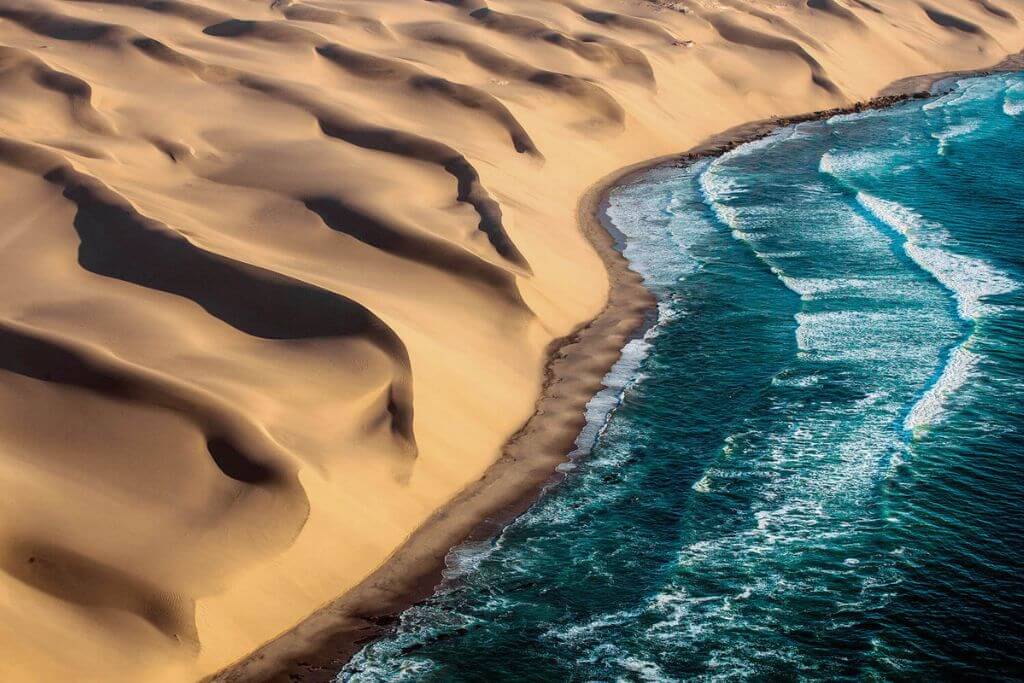
Just a few locations on Earth have enormous sand dunes that reach the ocean’s edge, yet on Namibia’s western coast, the Namib dunes extend all the way west to an uncharted region of the Atlantic Ocean.
The best way to travel along this section of the coast, which stretches for hundreds of miles, is from Swakopmund, Namibia’s main coastal city. Take a 4×4 tour over the dunes to the shore, across transient rivers, and to lagoons teeming with flamingos on their migratory journey.
9. On the seashore, stroll among the bones

The Skeleton Coast is a harsh section of Namibia’s northern coast that is covered in desert. A hostile landscape is created by the nearly constant smashing of the waves in addition to perilous rocky outcroppings that are difficult to discern.
The beach is also a graveyard for whales and other desert wildlife, whose bleached bones litter the golden sand. It was named after the broken and rusty remains of the ships that sank and then washed ashore. Circling sea mist and fog create a mesmerizingly ethereal atmosphere.
10. Enjoy the aerial perspective
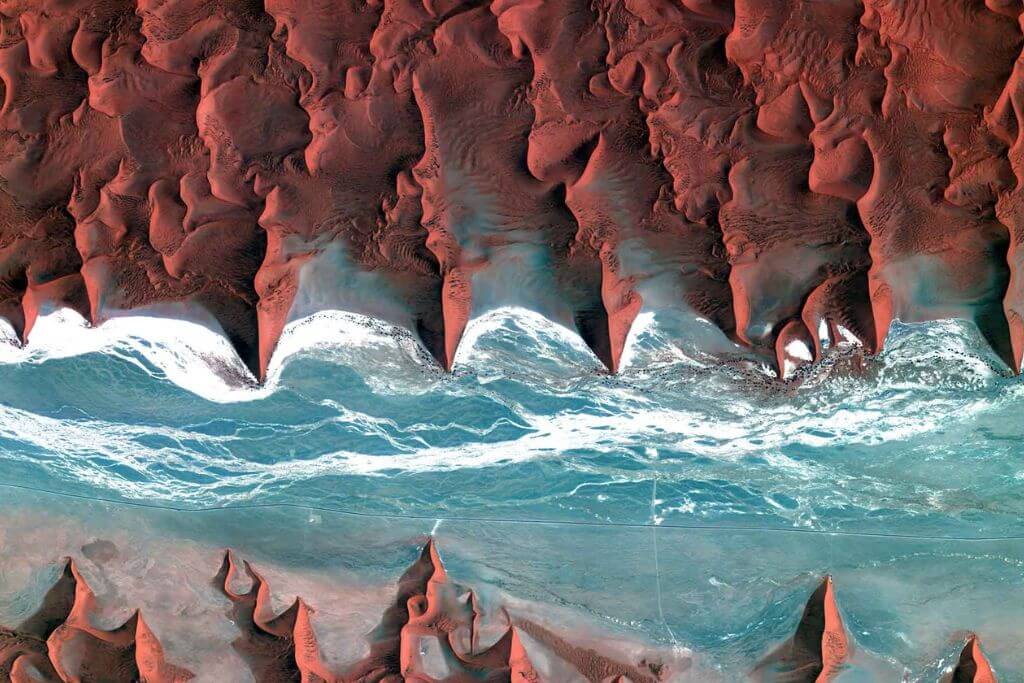
Breathtaking aerial views of Namibia’s dramatically varied terrain are available. In practically every area of interest, hot-air balloons and doors-off helicopter rides offer breathtaking scenery and photo opportunities.
Flying above Sossusvlei in the early morning allows you to observe the dawn over dune crests, which creates stark contrasts of light and shadow while searching for shipwrecks over the Skeleton Coast provides a bird’s-eye view of this magnificent coastline. Scenic fly-in safaris are an option for those seeking a luxurious trip.
11. You ought to take a safari
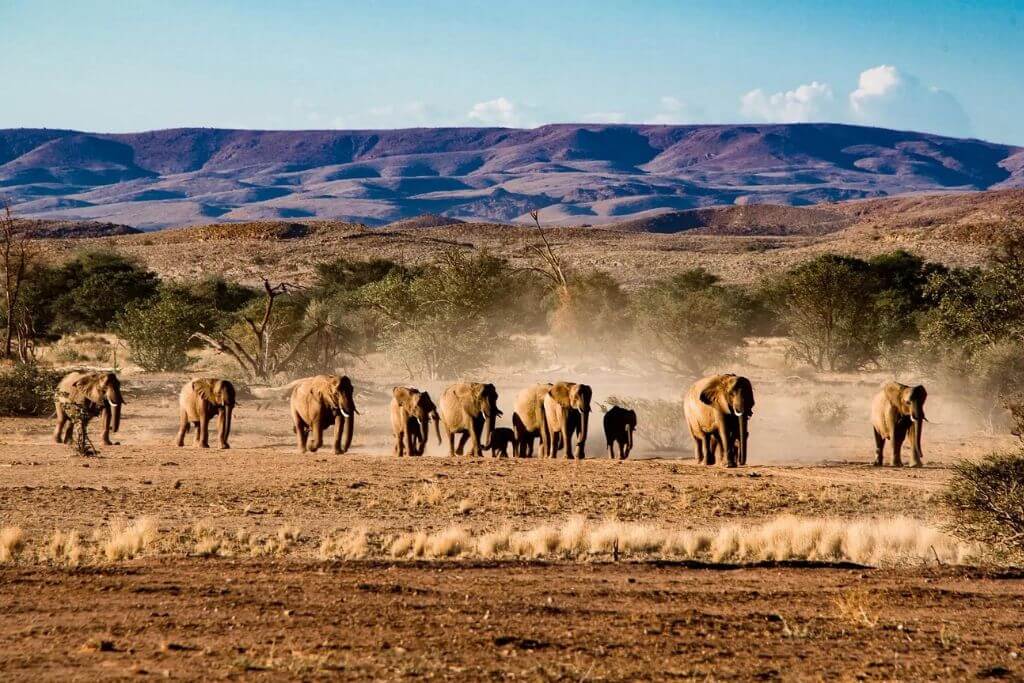
Animals in Namibia can be observed from the road or even from your accommodation because many species have adapted to life in the harsh desert. Have a safari at Etosha National Park to view concentrations of large game, including elephants, giraffes, lions, and white and black rhinos, though for the most astounding wildlife show. Also, a sizable portion of the cheetahs in the world resides in the park.
The watering holes in Etosha are well-known; some of them are just in front of game lodges, giving visitors a great view of the numerous animals that travel to them from different parts of the dry pan in search of water. In open-air vehicles, knowledgeable experts take you to the best viewing locations of the day while informing you about the species and their behavior as you gaze in awe.
